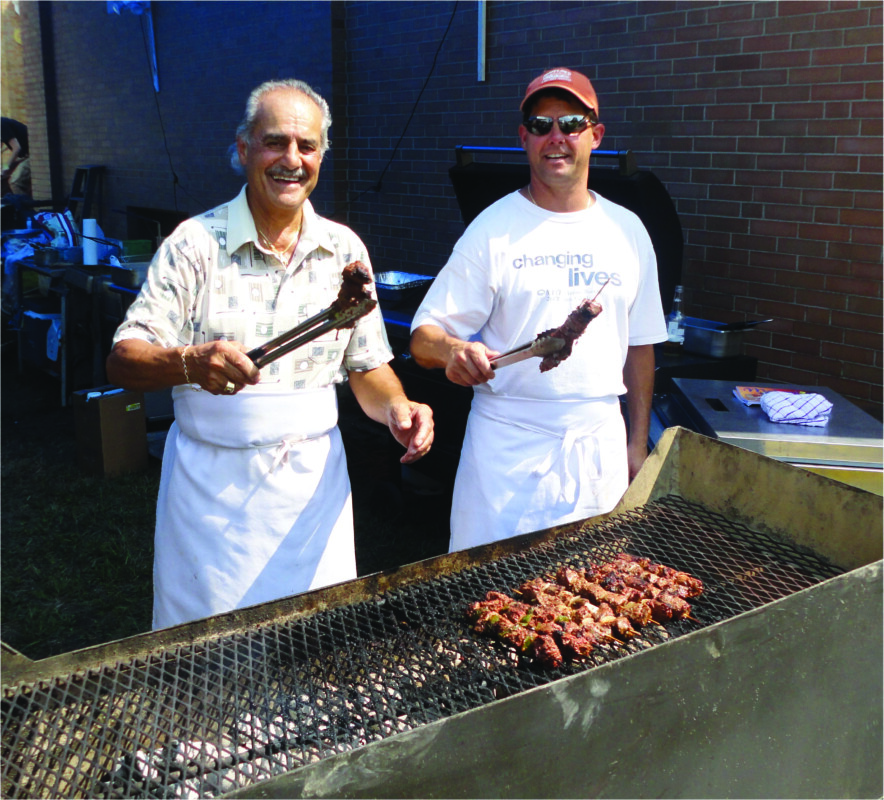Wines that help you dig in to the Mediterranean
The domestication of grapes and the production of wine have their roots in the Eastern Mediterranean and Asia Minor as early as 6000 B.C. Through trade, the agriculture and imbibing of the fruit of these labors spread throughout the Mediterranean to the coasts of modern-day Turkey, Lebanon and ancient Greece. The Greeks, in turn, took their favorite beverage to southern Italy, Sicily, Sardinia and the southern coast of France and Spain as early as the eighth century B.C. with their establishment of trading ports. In this column we will explore a lesser-known white wine from Sardinia and a robust red wine from the Languedoc region of southwest France.
Our first wine, a 2019 La Cala Vermentino di Sardegna, by Sella & Mosca (originally $13.99, reduced to $11.99 at the New Hampshire Liquor & Wine Outlets), is a wine most associated with Sardinia. Known as rolle in southern France, and grown in several different regions in Italy, it has been cultivated almost exclusively in Sardinia’s Gallura region, on the northern tip of the island. The label of this wine includes the statement, “Denominazione di Origine Controllato, the most strictly regulated denomination in Italy – Vermentino di Gallura.” These grapes thrive in Gallura’s vineyards, buffeted by the strong cold mistral winds that originate in the Atlantic and North Sea, travel across France, then leave the mainland entering the Gulf of Lion in the northern Mediterranean. The name “mistral” comes from the Languedoc dialect of Occitan and means “masterly.”
Vermentino lacks the strong acidity of most Italian wines, and Sardinia’s vermentino runs the spectrum from round and tropical to linear and mineral. The differences depend on where it is grown and the winemaker’s style. Some use steel, although some also age in wood. “Vermentinos from Gallura are structured but elegant, with pronounced mineral, almond and balsamic notes. They also have a hint of saltiness, thanks to the vicinity of the sea,” says Emanuele Ragnedda, of Capichera, a producer in the region. This vermentino has a pale straw color. To the nose it has a very slight tropical pineapple note along with pear and a touch of lemon blossom. To the tongue it is fresh with citrus, with some minerality, ending on a crisp note. This is great aperitif wine or it can be paired with seafood.
Our second wine hails from the Languedoc-Roussillon region in the south of France. This spans the coastal region of France from the border with Spain to Provence. There are around 700,000 acres under vines, making it the single biggest wine-producing region in the world, being responsible for more than a third of France’s total wine production. Languedoc was first planted by the Greeks in the fifth century B.C., and along with Provence is the oldest wine-producing region in France. The region excelled in wine production from the 4th century through the early 19th century. The phylloxera epidemic in the late 19th century severely affected the Languedoc wine industry and the region faced economic difficulties well into the ’70s until outside investment and re-focusing production led to many good new single varietal and classically blended wines.
The 2016 Domaine La Rougeante Corbières (originally $35.99, reduced to $17.99 at the New Hampshire Liquor & Wine Outlets) is that classic blend of mouvèdre, grenache and syrah. The color is a dense, opaque maroon; the nose is of blackberry and plum with some dried herbal notes. These carry through to the tongue in a full mouth feel with medium leathery tannins, which call for air after opening. A long finish with these rich fruit notes ends in some minerality. This is a wine to be enjoyed now or cellared for three more years and paired with grilled red meat, a rich stew, or a hearty pasta. The local fare of the Corbières region that runs from the Mediterranean coast to the Pyrenees with its Catalan culture includes tomato, garlic, eggplant and artichoke. These are dishes rich in flavor, so the wine needs to be robust and hearty to stand up to the food, and this wine does just that.
These two wines differ markedly from the routine whites and reds consumed on a regular basis. They are worth exploring not only for their uniqueness but to honor their storied past. Take a virtual trip to the ancient Mediterranean with these two wines. Invite them to your next dinner on the patio.
Featured photo: Courtesy photo.







